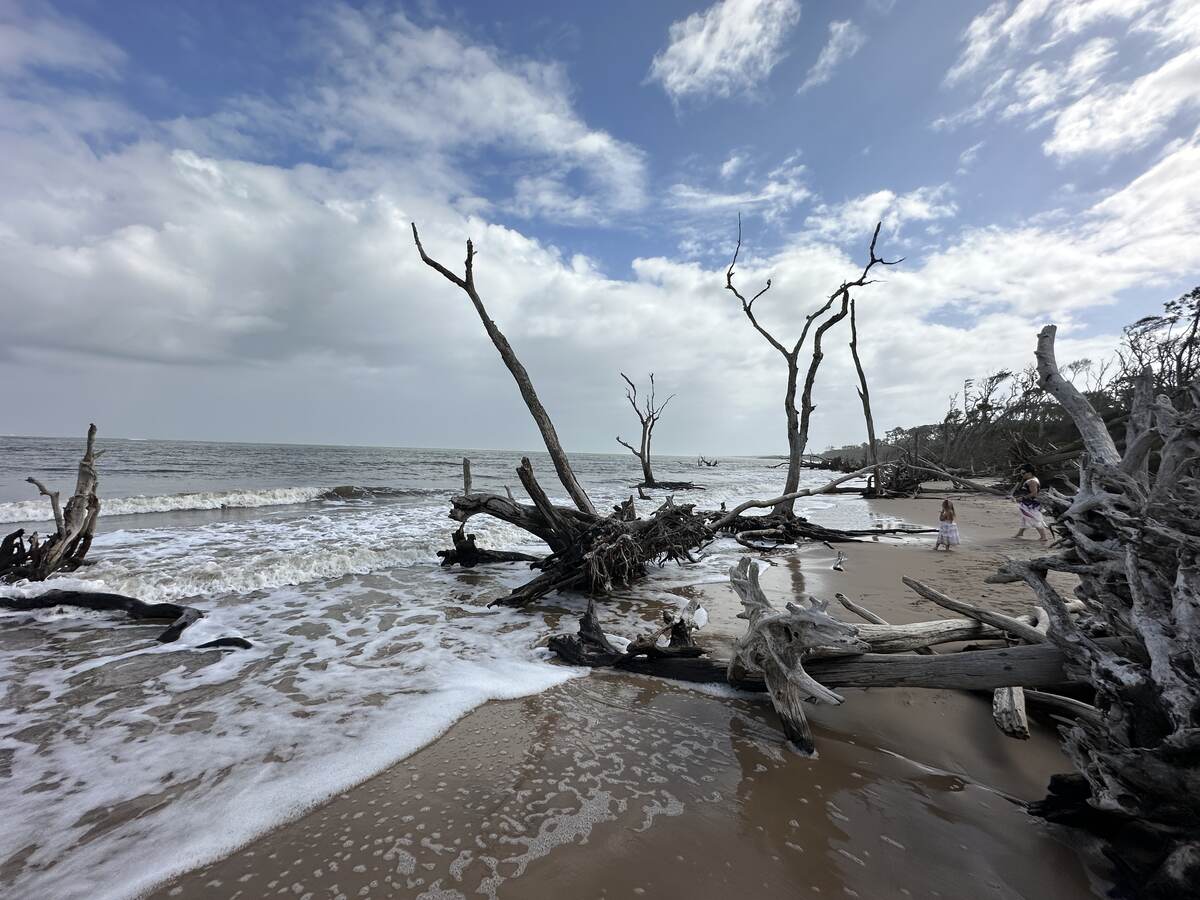Few journeys offer the profound blend of beauty and introspection found along Florida’s historic A1A. This coastal path leads not only through landscapes of serene beauty but also through spaces that bear the weight of the past. Starting with a short ferry ride across the St. Johns River, this route takes you into the heart of Mayport’s rich natural and historical landmarks. As you cross into Ft. George Island, places like Kingsley Plantation and Boneyard Beach await—each with stories that reveal the struggles, resilience, and lasting scars of those who came before us. Walking through these sites, we are called to remember, reflect, and honour history in its rawest form, fostering a connection that lingers long after we leave.
Kingsley Plantation
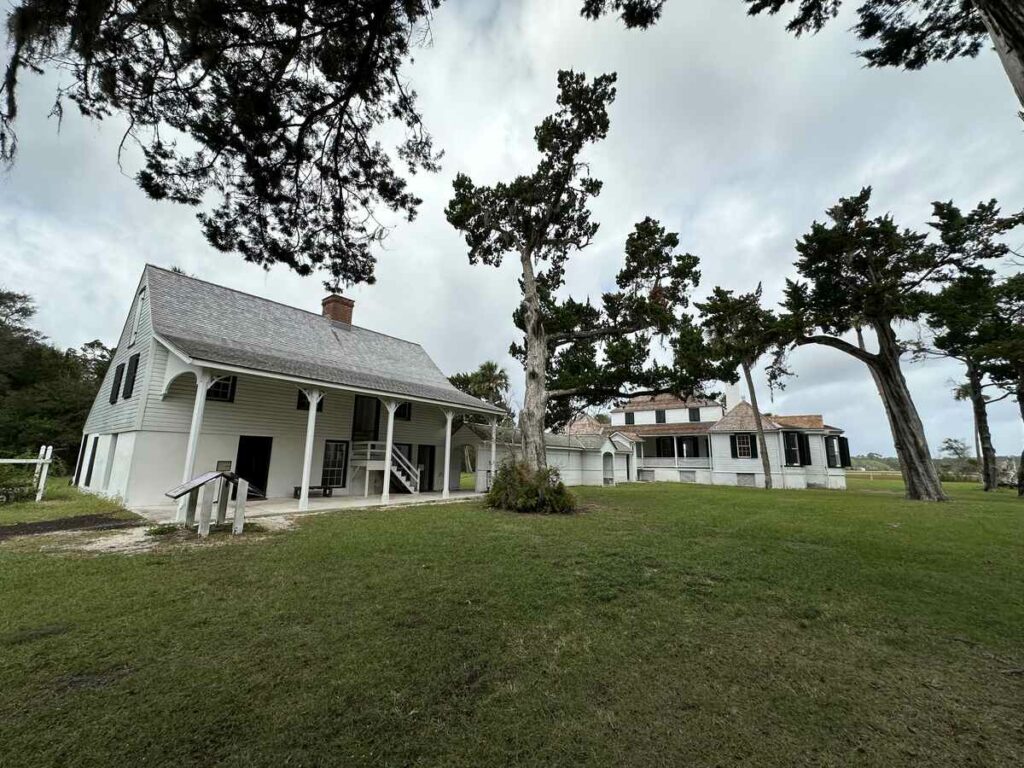
Kingsley Plantation, located on Fort George Island in Jacksonville, Florida, was an agricultural plantation primarily used for the cultivation of crops like sea island cotton, citrus, sugarcane, and indigo in the early 1800s. Established in 1814 by Zephaniah Kingsley, it was primarily worked by enslaved African laborers. The plantation’s purpose was economic, centered around cash crop production that fueled the plantation economy in the southern United States.
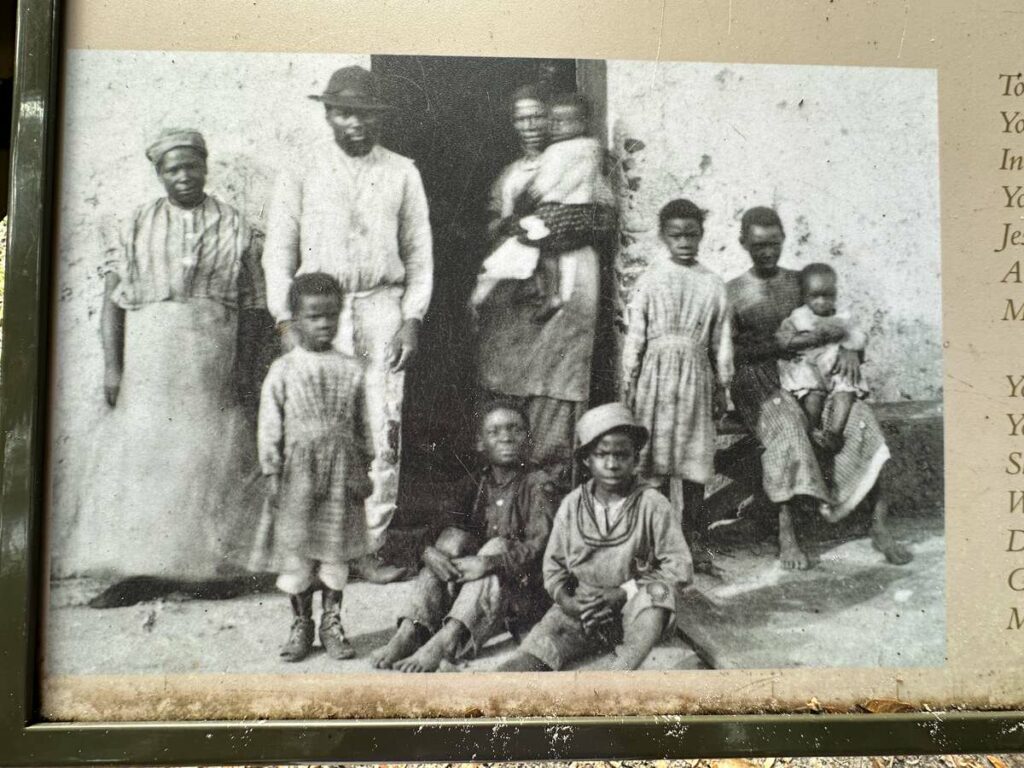
Zephaniah Kingsley, a prominent slaveholder and businessman, was unusual for his time in that he married one of his enslaved women, Anna Madgigine Jai, who was of African descent and originally from Senegal. Kingsley later emancipated her and their children. She managed parts of the plantation and became a notable figure in the area. Despite his unusual personal life, Kingsley was an advocate for slavery, albeit promoting a more liberal treatment of enslaved individuals, which he argued was economically beneficial.
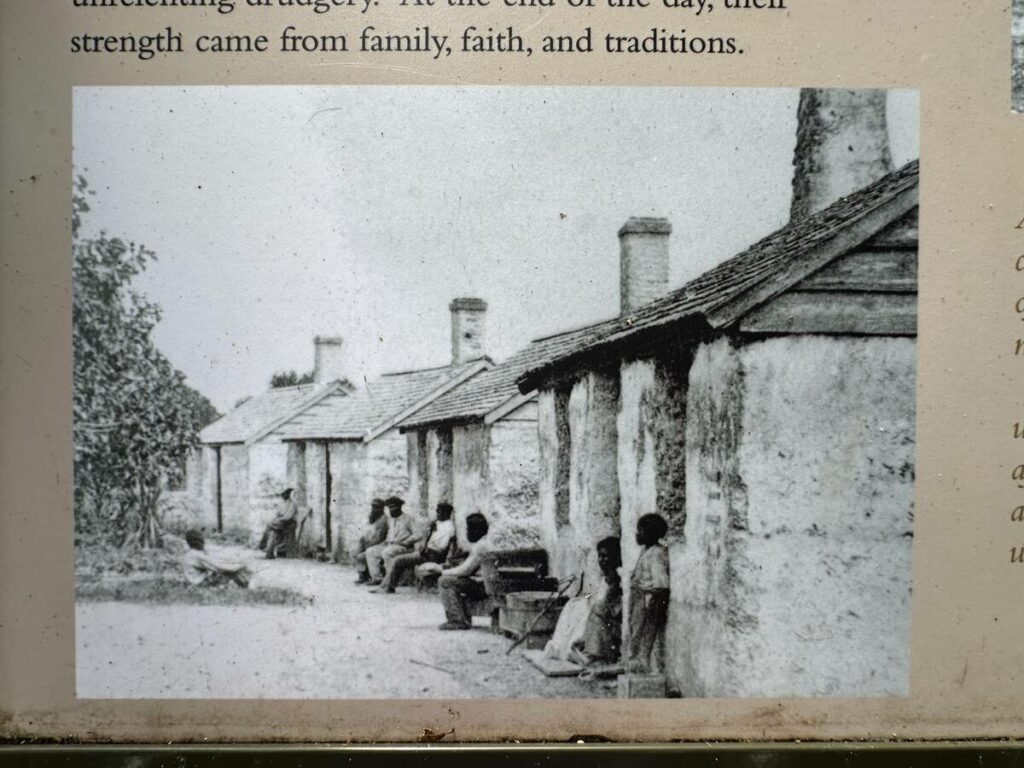
Today, Kingsley Plantation serves as a historical site managed by the National Park Service. It aims to educate visitors on the history of slavery, the daily lives of enslaved people, and the complex social dynamics of the plantation system in the early United States. The preserved slave quarters, house, barn, and kitchen structures offer insight into the lives of both the enslaved and the plantation owners, allowing visitors to confront and learn about the difficult aspects of American history. There is no admission fee.
Slave Quarters
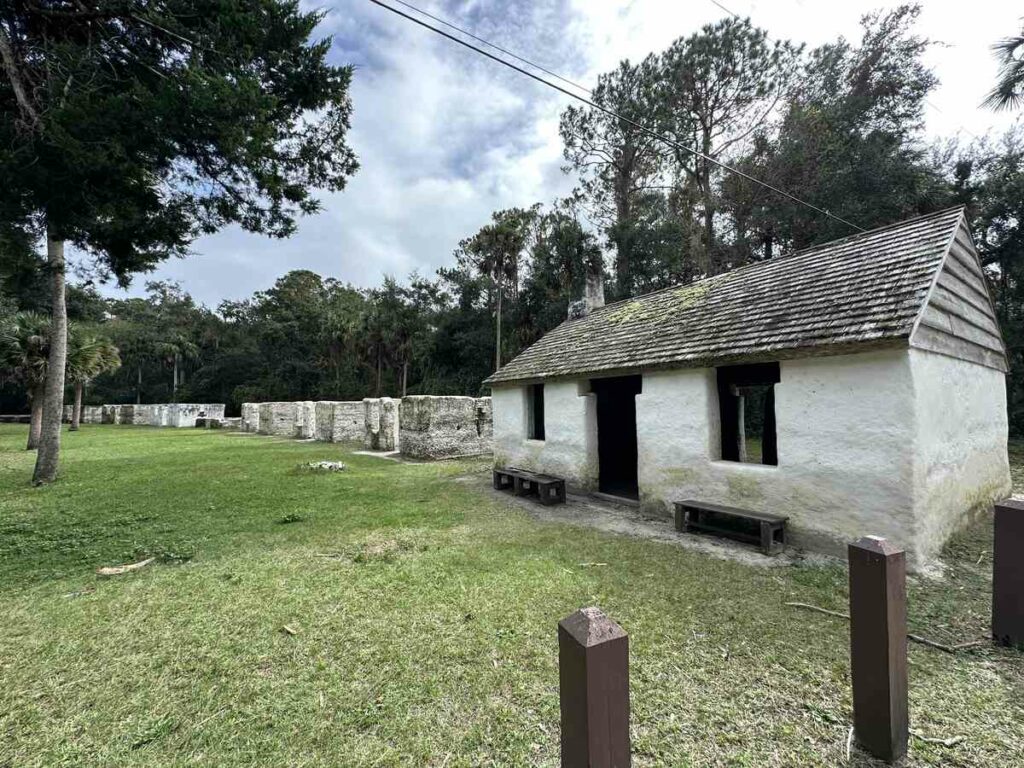
Arriving at Kingsley Plantation, you’re immediately met with the weight of history. This preserved estate, framed by a tree-lined entrance, reflects the lives of those who endured forced servitude on this land. The somber remnants of the slave quarters stand as silent testaments to the people who faced unimaginable hardships, their resilience etched into the very walls. Walking among these structures, visitors are invited to pause and reflect on the stories of the enslaved men, women, and children who once lived and laboured here, forever shaped by a history we must remember and honour. This experience offers a profound connection to the past, acknowledging lives uprooted and the indomitable strength of those who endured.
Complex and Haunting History
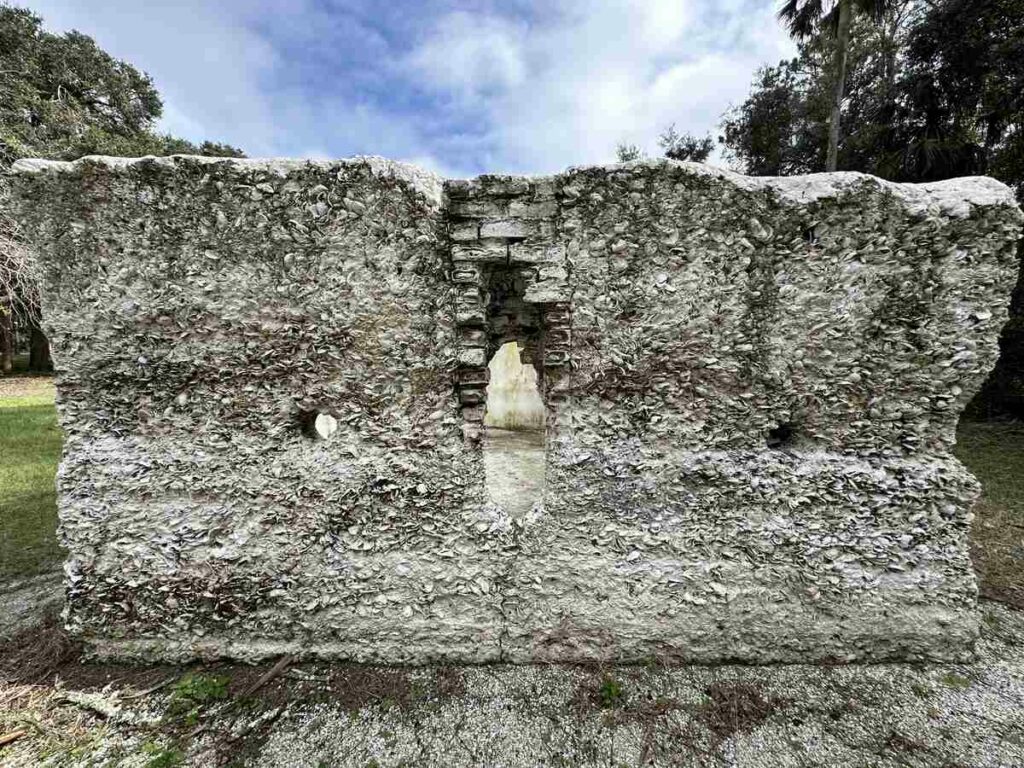
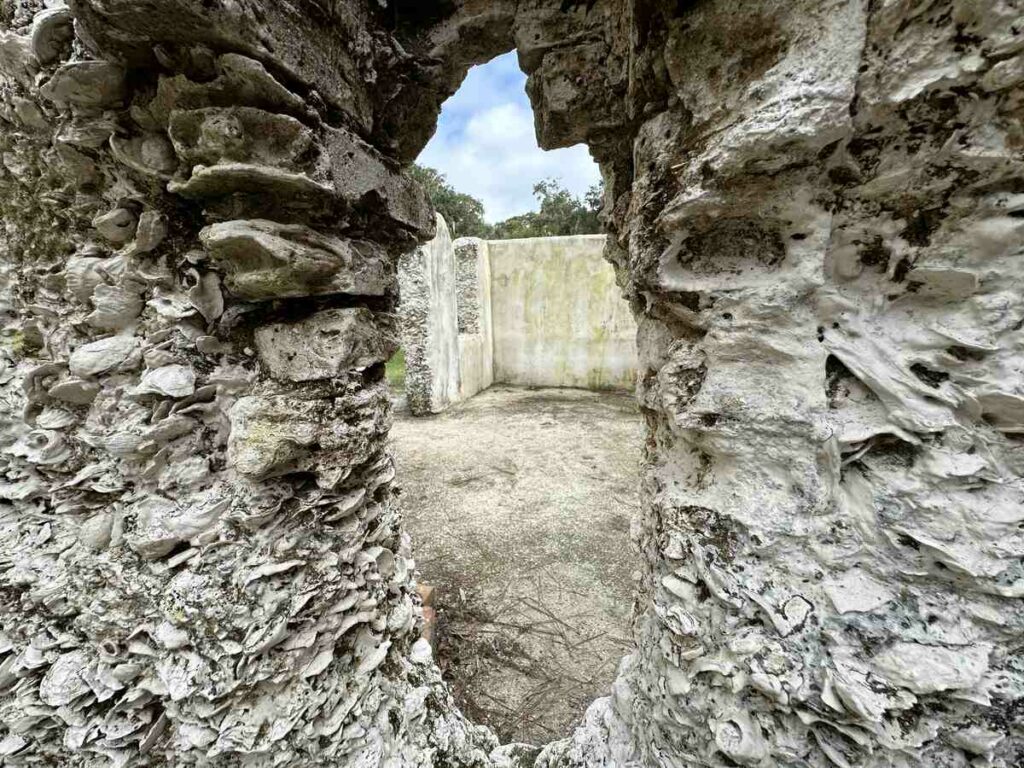
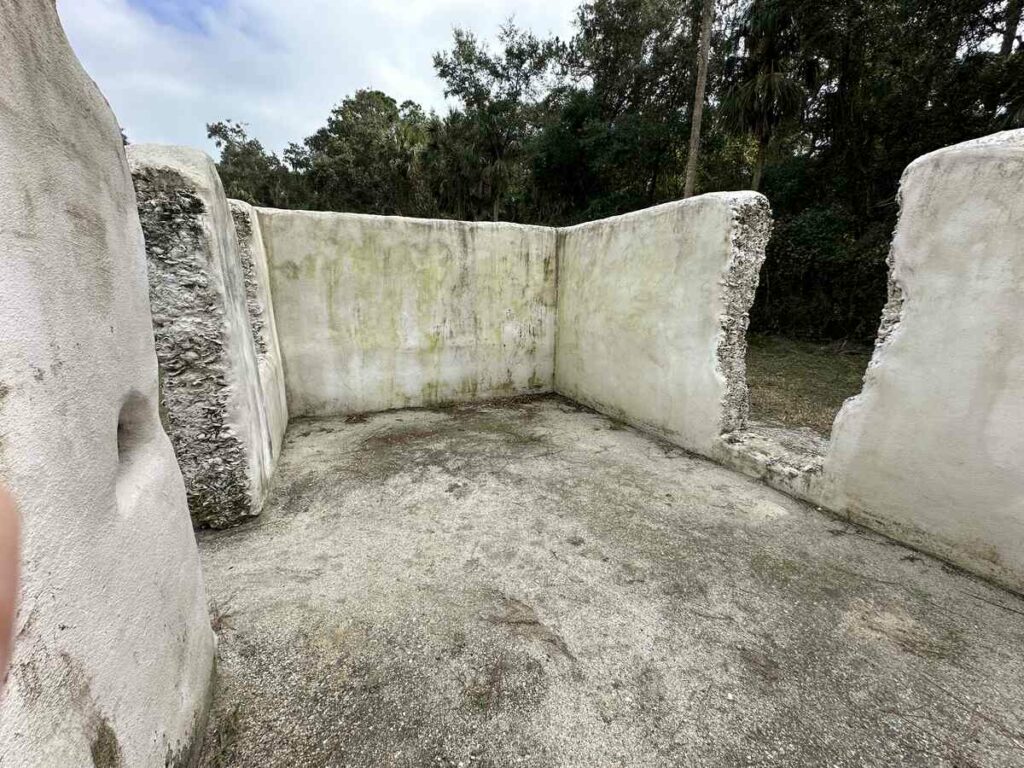
The slave quarters, set against a quiet backdrop of marshland and ancient oaks, serve as solemn reminders of lives lived under oppressive control. Walking these grounds, the air feels thick with memory, and each worn building seems to whisper stories of survival, resilience, and the unyielding will of those who lived here.
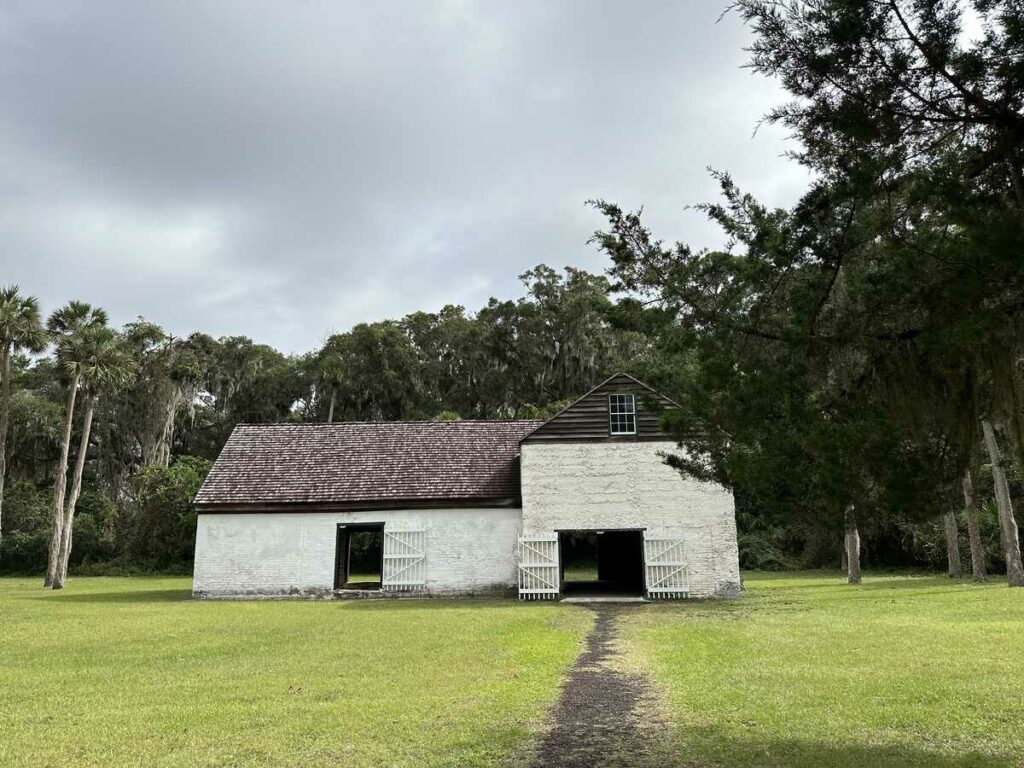
After a group of schoolchildren passed through, I found myself alone with these powerful surroundings. The quietness pressed upon me, and I wept, overwhelmed by the depth of suffering that one human could inflict upon another. It is a haunting reminder of a dark past—a history that must be confronted and remembered, so we may carry forward with compassion and understanding, determined that it may never be repeated.
When you visit, there is a self-guided audio tour called The Lion’s Storyteller that provides an immersive experience of the past. Visitors can download it for free, and I strongly encourage you to listen. This tour gives voice to the history embedded in these grounds, honouring the memory of those who lived and died here. I hope that one day, you can visit this site in person to pay tribute to their lives and stories.
Wander Through Nature’s Sculptures at Boneyard Beach
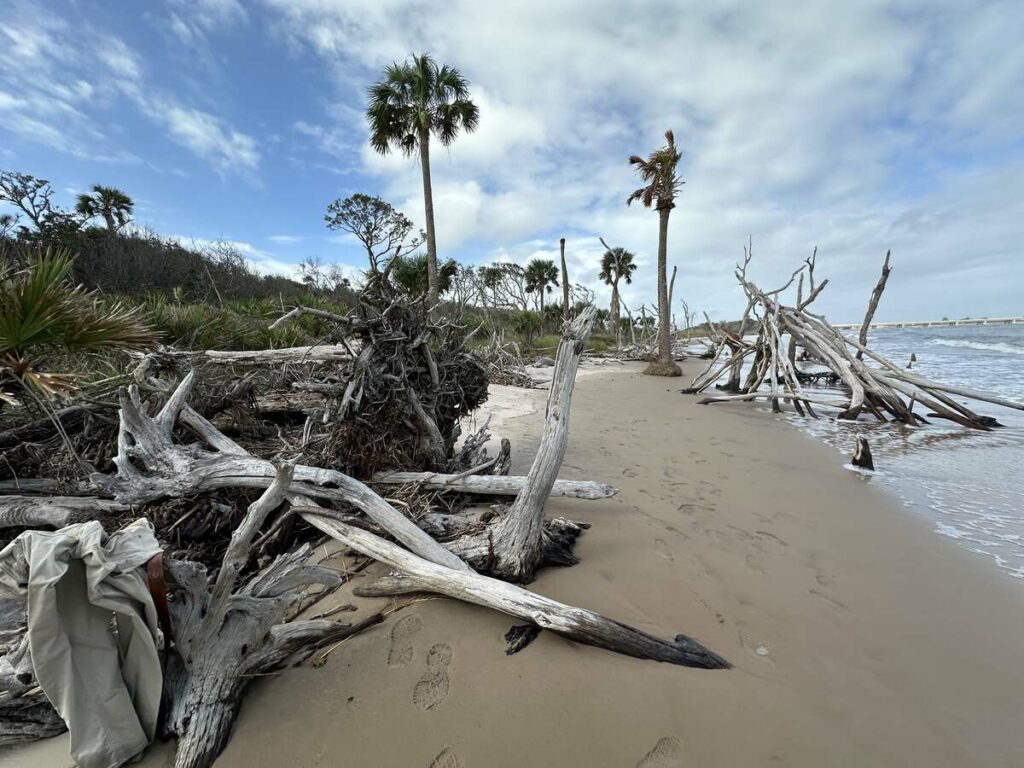
Located within Big Talbot Island State Park, Boneyard Beach is a must-see destination. After parking at The Bluffs Trailhead, follow the path for about a five-minute walk to reach the beach, where you’ll be greeted by a unique and striking landscape.
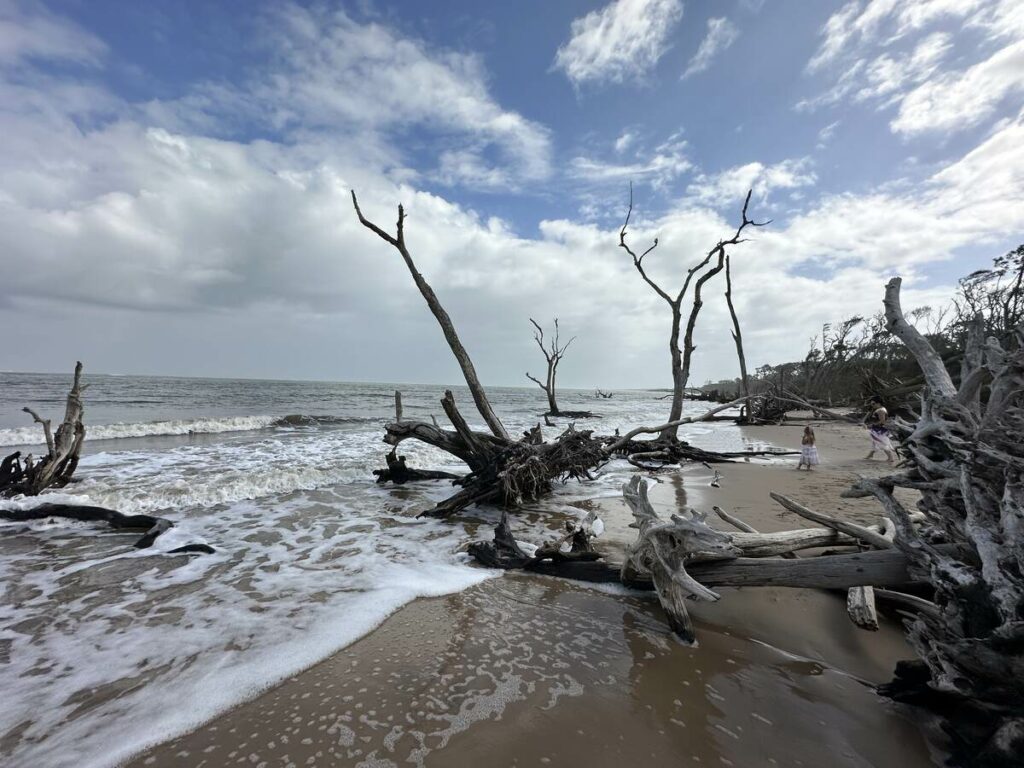
Boneyard Beach is like no other— the striking landscape is characterized by the presence of sun-bleached, fallen trees scattered along the shoreline. This unique scene results from natural coastal erosion processes. Over time, the relentless forces of wind and waves have worn away the shoreline, causing the trees to topple and become embedded in the sand. Once fallen, these trees are bleached by the sun and smoothed by the elements, creating a skeletal appearance that resembles a “boneyard.” Interestingly, these fallen trees play a crucial role in the ecosystem by helping to slow further erosion. They act as natural barriers, breaking up wind and wave energy, which helps protect the surrounding woods and upland areas of the barrier island.
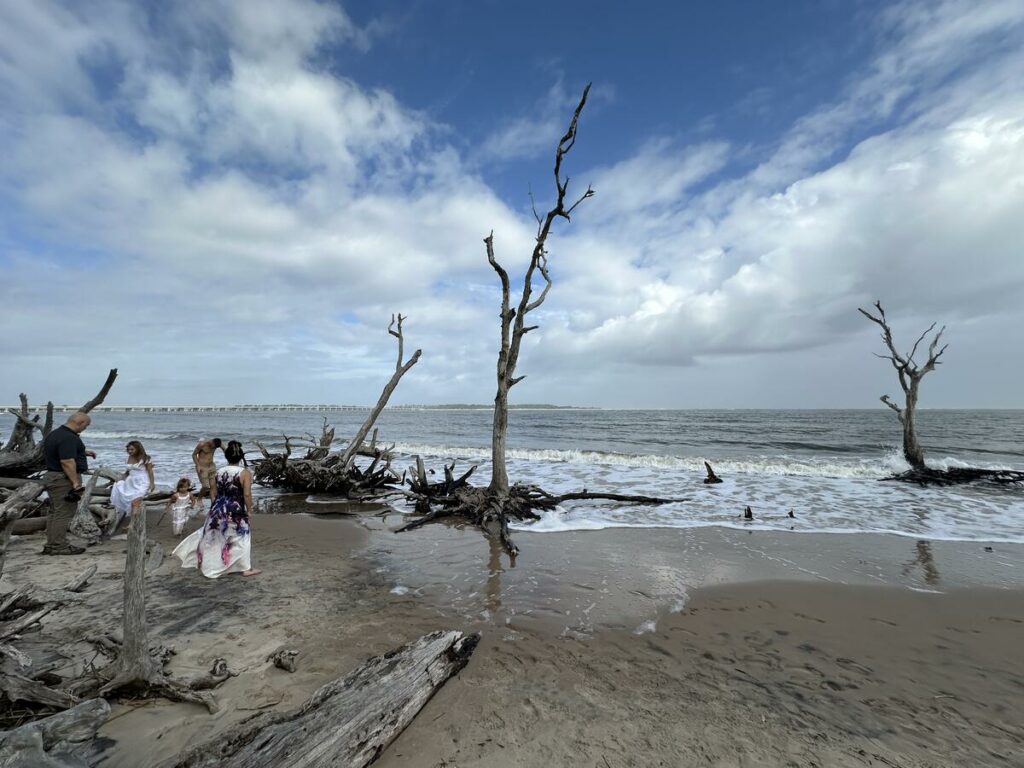
This striking scene offers a powerful symbol, echoing the lives lost to slavery and the resilience of nature. The beach is both peaceful and thought-provoking, inviting visitors to take in this quiet yet evocative reminder of the past.
Note the $3 entrance fee is based on the honour system. There is a QR code to reach this site to make your payment.
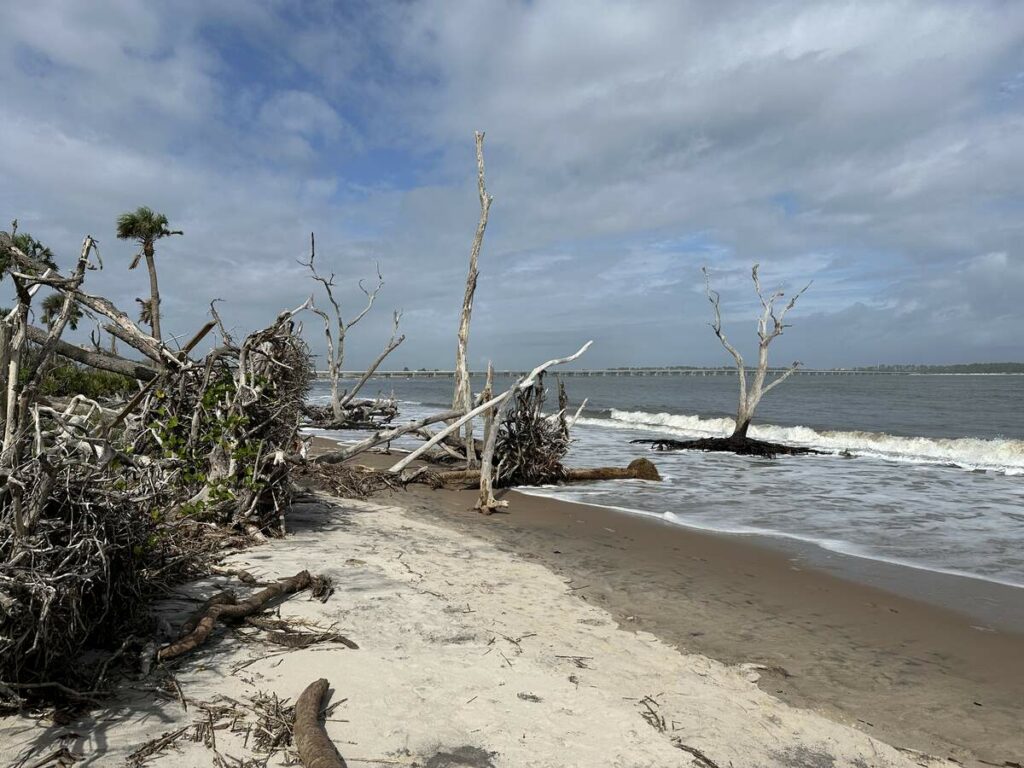
Today was deeply meaningful and thought-provoking. I returned home contemplating the experiences of the day. While we continue to live in precarious times, I find comfort in the small, genuine interactions I shared with the ferry captain, the volunteers at the plantation, and the visitors I passed along the path to Boneyard Beach.
And as serendipity would have it, while I was composing this blog, NBC Nightly News played in the background, sharing the story of a cyclist from China named Yifei Xu. He traveled across the USA without any money, relying solely on the kindness of strangers to demonstrate that human nature is inherently good. I encourage you to watch his video – one can only hope for the best.
As you embark on your travels, remember that our journey leaves an impact. Embrace eco-friendly accommodations, support local communities, and reduce plastic use. Respect wildlife by observing from afar and conserve resources like water and energy. Choose sustainable transportation, leave no trace behind, and participate in conservation efforts. Educate yourself and others about the environment you’re exploring. Let’s ensure that we tread lightly on our planet, leaving only footprints of kindness and taking home memories that inspire others to protect our beautiful world. Happy responsible travels!

